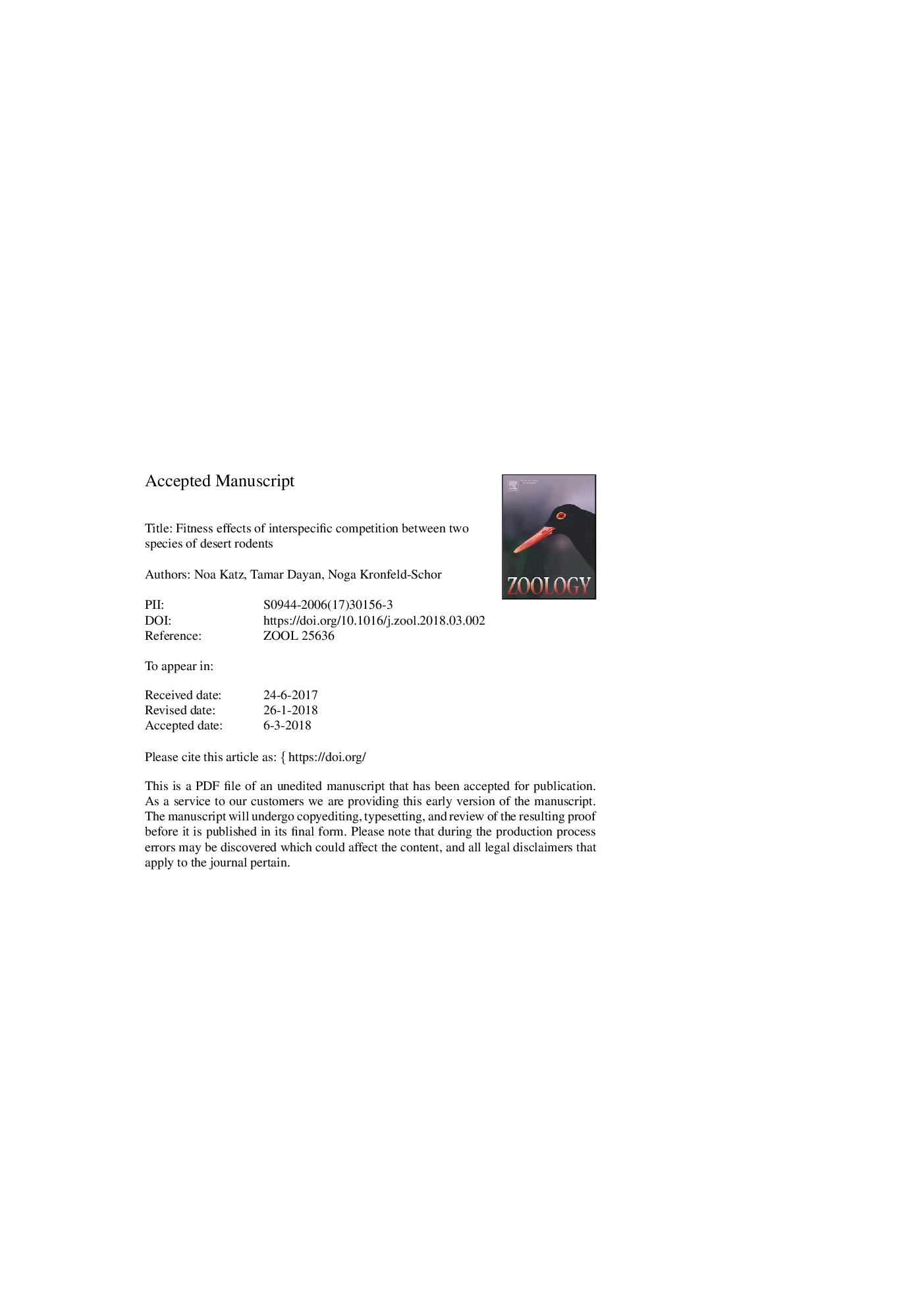| Article ID | Journal | Published Year | Pages | File Type |
|---|---|---|---|---|
| 8626973 | Zoology | 2018 | 32 Pages |
Abstract
Many factors affect individual fitness, but while some factors, such as resource availability, have received strong experimental support, others including interspecific competition have rarely been quantified. Nevertheless, interspecific competition is commonly mentioned in the context of reproductive success and fitness. In general, when reproduction is likely to fail, reproductive suppression may occur. We studied the golden spiny mouse (Acomys russatus) and the common spiny mouse (A. cahirinus; however, recent molecular analysis in spiny mice from Jordan and Sinai suggests this species is A. dimidiatus (Frynta et al., 2010), as a model for the effect of competition on reproduction in four field enclosures: two populated only by A. russatus individuals, and two populated by individuals of both species. In presence of A. cahirinus, fitness of A. russatus was lower: the number of A. rusatus offspring was significantly lower; more males had regressed testes (indicating reproductive depression); more A. russatus young had damaged tails. However, no clear effect was evident in A. russatus female vaginal smear cytology. We conclude that the presence of A. cahirinus impairs fitness and reproductive success of A. russatus. While various direct and/or indirect mechanisms may be responsible for the effect of competition on reproduction, a plausible mechanism is increased use of torpor induced by the presence of A. cahirinus previously documented in A. russatus.
Related Topics
Life Sciences
Agricultural and Biological Sciences
Animal Science and Zoology
Authors
Noa Katz, Tamar Dayan, Noga Kronfeld-Schor,
